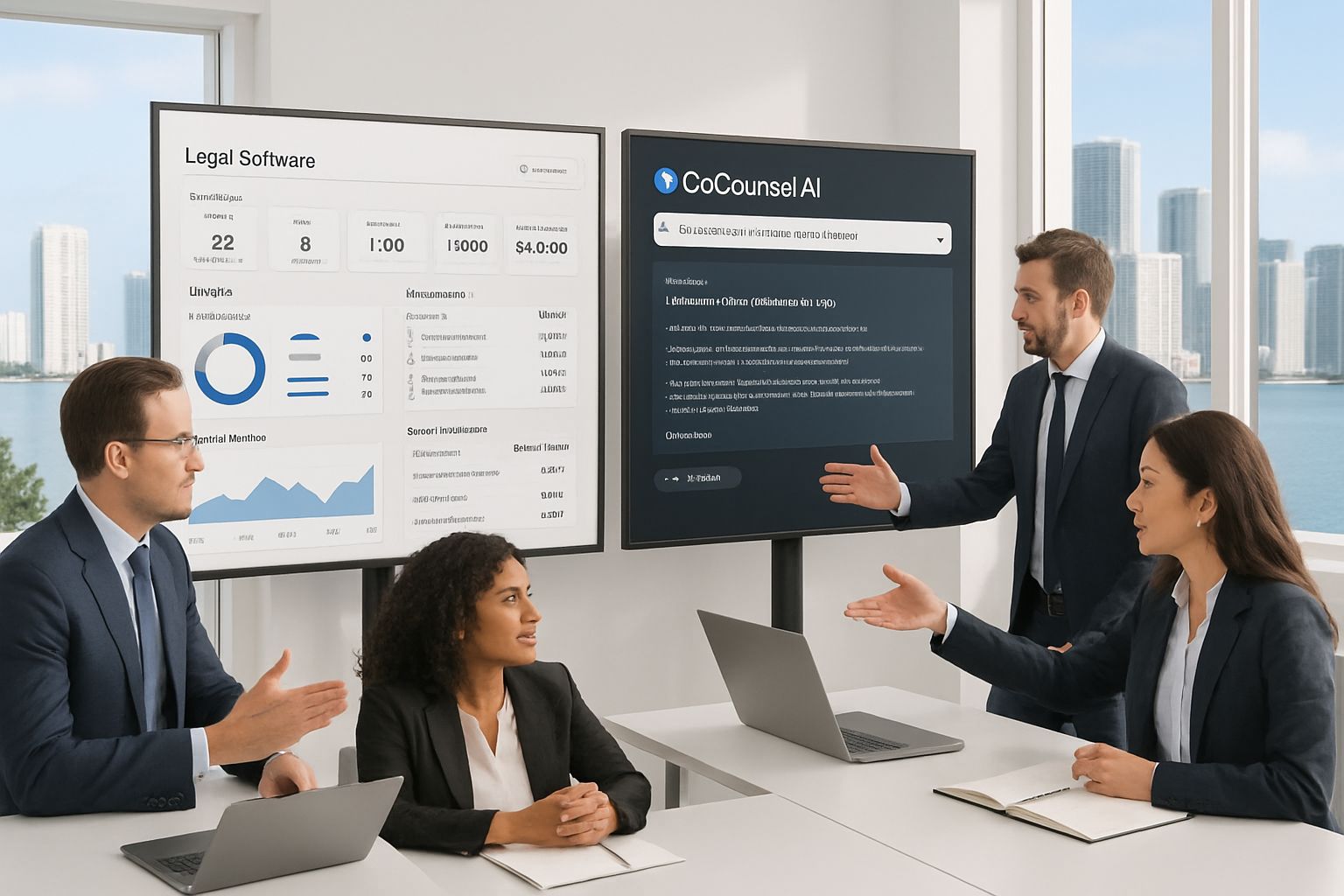
AI CERTS
24 hours ago
Miami Public Defender’s Legal Tech Triumph
This article unpacks the project, the risks, and the strategic implications for Legal Tech leaders. Consequently, readers will gain actionable insights for future Innovation initiatives. Let us begin with the Award itself. Subsequently, we will examine deployment data, ethical hurdles, and market momentum.

Award Underscores Public Service
Thomson Reuters announced the winners at its SYNERGY 2025 conference on 17 November 2025. Miami-Dade’s office topped the public sector category after judges reviewed dozens of Innovation submissions. President Raghu Ramanathan praised recipients for setting new excellence benchmarks. Meanwhile, Public Defender Carlos J. Martinez called the Award a testament to relentless client advocacy.
He stated that the AI assistant functions like a paralegal, freeing attorneys for deeper strategy. Consequently, caseload pressure may ease, although empirical proof remains pending. These highlights close the award narrative. However, understanding the technology itself demands closer inspection.
In brief, industry recognition confirms the office’s forward posture. Therefore, many observers now ask how the AI stack actually works.
Inside The AI Deployment
PD-11 deployed CoCounsel in early 2024 after a limited pilot with select felony units. Initially, lawyers used the tool for rapid case-law summaries and citation extraction. Later, the scope expanded to motion drafting and evidence review. Moreover, Martinez says PD-11 is the first U.S. government agency to adopt Thomson Reuters CoCounsel.
The software blends large language models with Westlaw authority, producing content grounded in vetted sources. Nevertheless, attorneys must still verify every output, especially citations. Current workflows route AI drafts through human review before court filing. Consequently, supervisors report moderate time savings without compromising accuracy.
Additionally, CoCounsel now integrates with the case management system for seamless document storage. Key deployment milestones appear below.
- January 2024: Pilot began with ten attorneys and cut research time by twenty-five percent.
- August 2024: Full rollout covered all 200 lawyers across adult and juvenile divisions.
These milestones illustrate disciplined scaling practices. In contrast, many private firms still experiment informally. Therefore, Miami offers a public blueprint for Legal Tech governance.
The deployment shows AI can thrive with structured oversight. However, potential pitfalls demand equal attention, which we explore next.
Balancing Risks And Ethics
Generative AI excels at pattern detection yet sometimes fabricates persuasive but false citations. Courts have sanctioned filings that relied on hallucinated precedent. Consequently, PD-11 mandates manual verification before any submission. Additionally, confidentiality rules limit data sharing with cloud providers.
The office encrypts uploads and strips personal identifiers where feasible. Moreover, supervisors train staff on ABA Formal Opinion 512 obligations. Ethical duties of competence and Justice access remain central. Nevertheless, critics warn that algorithmic bias might reinforce racial disparities.
Consequently, PD-11 plans external audits to test outputs against minority case metrics. In sum, risk controls evolve alongside product capabilities. Therefore, responsible Legal Tech adoption demands continuous governance.
These safeguards illustrate proactive anticipation of problems. Subsequently, we examine how the project links to broader community Justice goals.
Community Impact And Justice
Beyond courtroom filings, PD-11 supports the Miami Behavioral Health Community Safety Initiative. The program analyses police incident data to divert people with mental illnesses from jail. CoCounsel assists by clustering reports and flagging crisis patterns within minutes. Consequently, social-service teams can intervene earlier, reducing harmful jail cycles.
Judge Steven Leifman’s Miami model shows treatment saves money while improving public safety. Moreover, Martinez argues that AI fueled Innovation strengthens constitutional Justice obligations. Nevertheless, success hinges on continued funding and transparent metrics. The office is developing dashboards to publish diversion statistics quarterly.
Therefore, stakeholders can monitor equity outcomes in real time. Community analytics extend impact beyond individual cases. However, the initiative still depends on sustained Legal Tech funding.
Market Trends Driving Adoption
Industry surveys reveal that 79% of lawyers used AI tools by late 2024. Clio’s Legal Trends Report attributes growth to client pressure for speed. Moreover, Precedence Research projects the U.S. legal services market will reach $450 billion by 2030. Consequently, vendors race to embed generative features across research, drafting, and due diligence.
Public defenders often lag because procurement cycles and budgets move slowly. Therefore, Miami’s leap illustrates how thoughtful Innovation can overcome bureaucratic friction. Legal Tech decision makers should note three driving forces:
- Client expectations for instant answers continue rising.
- Budget constraints demand automation to stretch scarce public funds.
- Competitive labor markets make talent retention harder without modern tools.
These forces will likely accelerate additional government pilots in 2026. Nevertheless, skill gaps could slow scaling if leaders ignore workforce training. Market dynamics favor early movers. Subsequently, upskilling becomes the next strategic imperative.
Skills And Next Steps
Human expertise remains the backbone of effective Legal Tech programs. Consequently, PD-11 pairs tool rollouts with targeted training on prompt engineering and verification. Other agencies can replicate this approach through affordable online credentials. Professionals can deepen expertise with the AI+ Quantum Specialist™ certification.
Moreover, many law schools now embed AI literacy modules into clinical programs. Therefore, new graduates enter offices with baseline proficiency. Nevertheless, veteran lawyers may require structured refreshers on algorithmic limitations. Mentorship circles and brown-bag sessions can fill that gap.
Subsequently, organizations should codify playbooks that capture lessons and update them quarterly. Such routines sustain momentum and encourage ongoing creative culture. In sum, change management equals success. Consequently, Miami’s experience offers a replicable Legal Tech governance template.
These tactics close the skill gap efficiently. However, sustained leadership attention will determine long-term returns.
Miami-Dade’s public defenders illustrate how courageous governance can transform service delivery. The SYNERGY Award validates their strategic vision and disciplined execution. However, the story transcends trophies. It demonstrates that mature Legal Tech programs require robust ethics, transparent metrics, and constant training.
Consequently, agencies that move today can shape future Justice ecosystems. Moreover, market forecasts suggest the opportunity window will narrow quickly. Therefore, professionals should explore certifications like the linked AI+ Quantum Specialist™ program to stay competitive. Take the next step toward practical Innovation and elevate your Legal Tech strategy today. Subsequently, share lessons learned to accelerate responsible transformation across the profession.



